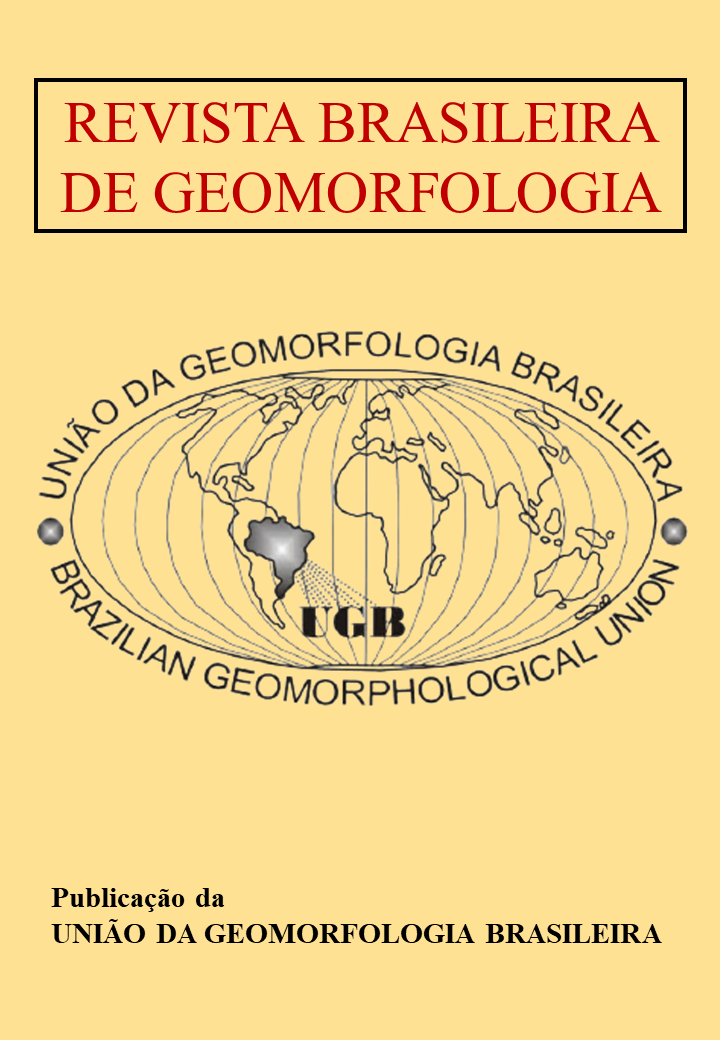Cartography of original and technogenic landform in the Tigre watershed, Erechim, RS
DOI:
https://doi.org/10.20502/rbg.v26i3.2624Keywords:
Geomorphological mapping, Anthropogenic geomorphology, Urban sprawl, Methodological guidelinesAbstract
This study examines the importance of geomorphological maps in spatial analysis and urban planning, focusing on the representation of anthropogenic landform. The objective is to present methods for mapping morphological changes resulting from urbanization, using cartography of original and technogenic forms over 48 years. The research combines literature review, fieldwork, and the use of Geographic Information Systems (GIS), generating Digital Terrain Models. The results show that urbanization in the Tigre River basin increased from 35.43% in 1975 to 79.22% in 2023. An analysis at scales of 1:25,000 and 1:5,000 revealed substantial changes in the original morphology, with transformations in plain and terraces fluvial as well as the formation of technogenic hillslopes. This process intensified surface runoff due to reduced infiltration. Human interventions intensified erosive processes and altered the natural morphology, creating technogenic surfaces susceptible flooding, flash floods, inundation and erosion. It is concluded that urbanization drastically changed the hydrogeomorphological dynamics, requiring an integrated approach in urban and environmental planning to mitigate these impacts on the population.
Downloads
Downloads
Published
How to Cite
Issue
Section
License

This work is licensed under a Creative Commons Attribution-NonCommercial 4.0 International License.
Author (s) retain copyright and grant the journal right of first publication with the work simultaneously licensed under the Creative Commons Attribution License that allows sharing the work with recognition of its initial publication in this journal.








